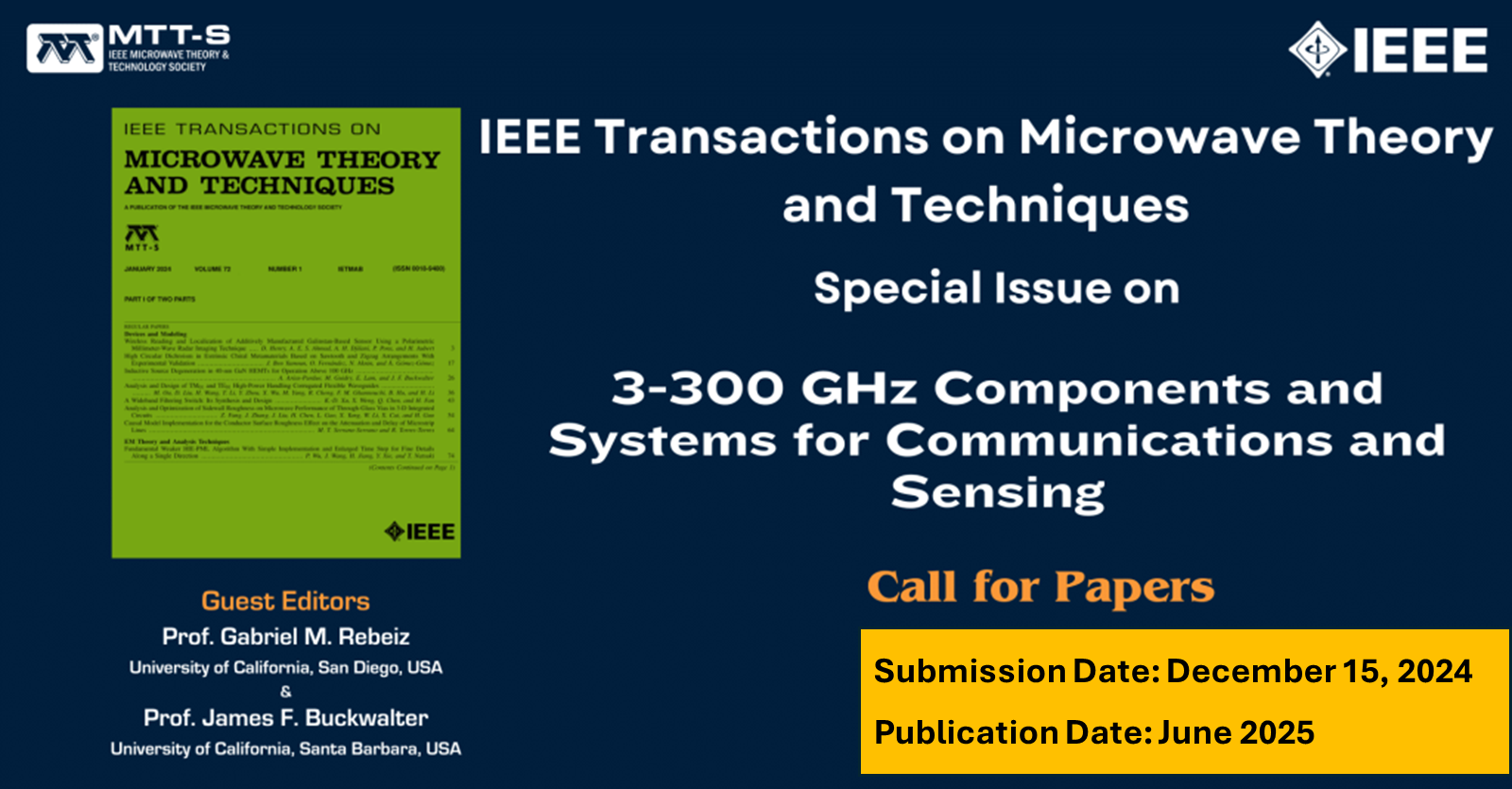
IEEE Transactions on Microwave Theory and Techniques
Special Issue on
3-300 GHz Components and Systems for Communications and Sensing
Submission Deadline: December 15th, 2024
Publication Date: June 2025
Motivation
The advance of 5G to 6G will join communication and sensing systems (JCS) through wideband base-station, non-terrestrial networks (NTN) such as satellite communications (SATCOM), X-MIMO (eXtreme MIMO), STAR (simultaneous transmit and receive systems also known as self-duplex), and advanced automotive radar systems. Strong interest in techniques to extend systems from RF through microwave to 300 GHz. Systems and sub-systems based on narrowband and wideband low-power transceivers using advanced CMOS, SiGe, GaA and GaN technologies, analog and digital beamforming phased-arrays, active and passive reflect arrays (also known as RIS – reflect impedance surfaces), multi-channel automotive imaging radars, N-path receivers with linearity enhancement and IP3 cancellation, efficient power amplifiers with digital pre-distortion using AI/ML algorithms, to name a few, are being developed at a rapid pace. In addition, calibration and built-in-test of such complex chips and sub-systems reduce the calibration time and system cost. Also, several advanced systems can only be built using novel heterogeneous 3-D packaging capable of co-integrating different technologies in a low-loss and thermally-efficient module. RF/Microwave systems will continue to pervade our daily lives, with D-band and G-band systems coming soon for point-to-point communications and high-resolution radars.
Topics of interest to be covered by the Special Issue include, but are not limited to:
- Sub-systems and system-level demonstrations for communications and sensing, including but not limited to: active and passive narrowband and wideband phased arrays, reflect arrays (RIS), MIMO arrays, repeaters, self-duplex and active nulling arrays, arrays, reconfigurable arrays, calibration and test techniques, etc. Applications for 5G/6G, SATCOM, JCS, X-MIMO, advanced automotive radars, are especially welcome.
- Integrated circuits and/or sub-systems using single and multiple chips, including but not limited to: communication and radar chips with multi-channel transceivers, power amplifiers with wideband digital pre-distortion, signal cancelling chips for self-duplex systems, and other complex systems on a chip. Circuits using solid-state (BiCMOS, SiGe, CMOS, SOI CMOS, GaAs, GaN and any combination) and non-solid-state technologies (RF MEMS, BST, liquid crystal, phase-change, etc.) are solicited.
- Heterogenous integration, advanced multi-layer modules and packaging technologies, including but not limited to: 3-D multi-technology packaging for multifunction systems, chip-on-chip packaging, high power/thermal considerations, module technologies antennas-in-package and wafer-scale systems.
- Device-to-system simulation frameworks supported by experimental verification that help to capture the increasing complexity of the electromagnetic environment including technologies for circuits and packaging. Holistic approaches to modeling and simulation that help accelerate transitions of emerging technologies are strongly encouraged.
- Review papers, including but not limited to: papers summarizing the state of the art in 5G/6G, SATCOM, above-100 GHz systems, automotive radars, power amplifiers, are also encouraged. Potential authors should contact the editors to discuss their submission and to get approval for this special category.
Authors must consult the link https://mtt.org/publications/t-mtt/information-for-authors/ for submission instructions. When contacting the guest editors, please copy both.
Submission Date: December 15, 2024, Publication Date: June 2025.
Guest Editors:
Prof. Gabriel M. Rebeiz
University of California, San Diego, USA
rebeiz@ece.ucsd.edu
Prof. James F. Buckwalter
University of California, Santa Barbara, USA
buckwalter@ece.ucsb.edu